I’ve known for some time that Ian Nicholson, an IFMGA guide and a fine person, was releasing a book on glacier travel through Mountaineers Books. I’ve been anticipating it. Here’s what I expected: An updated version of Andy Selters’ 1990 classic, Glacier Travel and Crevasse Rescue. That book, for folks even contemplating a foray into glaciated terrain, was a bible, at least in my small world of bumbling around in the early 90s. Poor mid-winter snow, and I’d crack open this glacier travel bible and maybe practice a 3:1 haul system. I could be wrong, but from what I have gathered, that book was last updated in 1999.
Thirty-five years on, it was ample time for my reference library to be updated. I gladly ponied up my cash and purchased a copy for $34.95 plus shipping.

Nicholson’s book is titled Glacier Climbing & Crevasse Rescue: Essential Skills for Snow Travel. If you prefer a summary, here’s the kicker. This book far surpassed my expectations. It is comprehensive for climbers, mountaineers, alpinists, and ski/splitboard mountaineers. Regardless of how you categorize yourself in terms of mountain disciplines, my guess is that this book will impress. Better yet, it will inform. Running 334 pages, the book’s deep and comprehensive contents, broken into 14 chapters, should not leave you wanting. A bonus, and a fine touch, is the inclusion of many short essays, interspersed throughout the book, written by guest writers. These brief narratives offer an interlude from the more technical how-tos Nicholson explores.
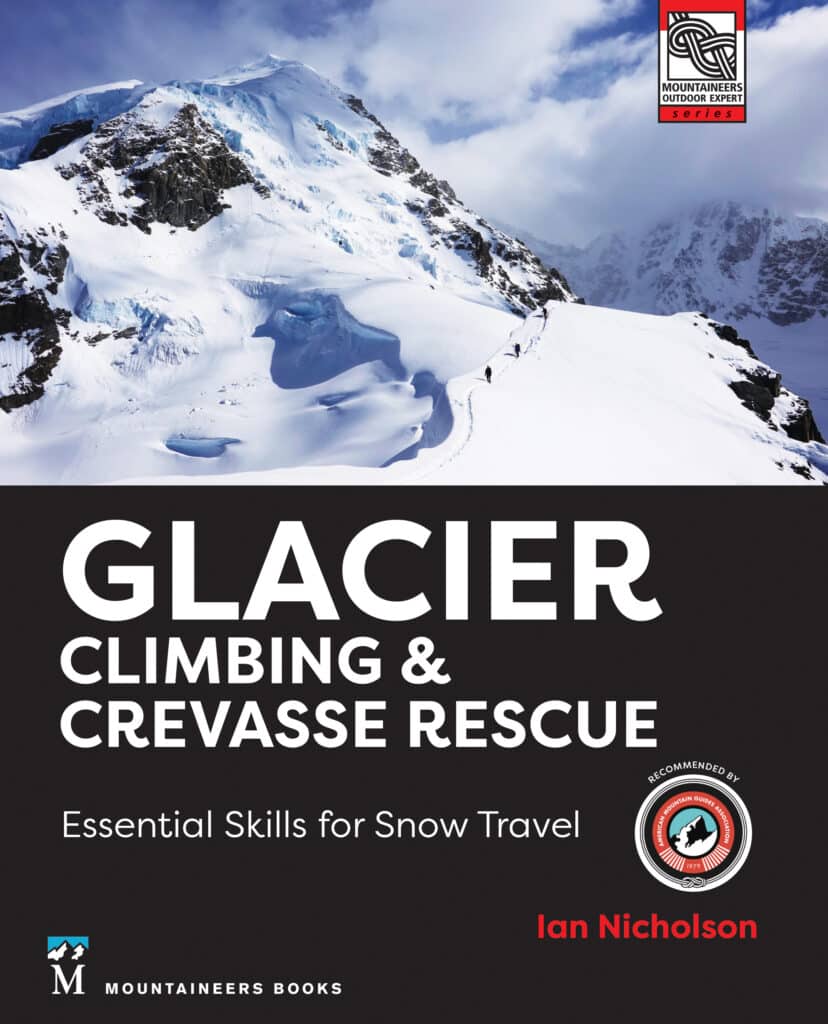
We’ll tackle some of those how-tos in a moment. First, let’s acknowledge that there are many learning styles. For visual learners, the Internet does have some solid glacier travel videos (in particular, those focusing on basic crevasse rescue). There are pay-walled video classes available for ski mountaineering and crevasse rescue, which may be suitable for you. While I’ve viewed several of these offerings, personally, I find text, illustrations, and photos a better way for me to supplement my in-the-field learning. (But that’s a small sample size.) I can open a page, examine the information, and follow the text and photos to practice a specific skill.
I also believe the book’s comprehensive nature will help people sift through the considerable noise regarding online tutorials (both websites and social media channels). My feed is bombarded by technical mountaincraft how-tos. This book introduces a range of nuanced concepts and practices. If I need or want more information or a visual tutorial, the book introduces the specific terms/vocabulary to make an online search for instructional videos more efficient.
One main reason for this high praise is the breadth of content. And yes, the book’s contents, as shown in the images below, are thorough. Expectedly, there’s a primer on glaciers and their dynamism. This quickly transitions into more technical topics, such as ropework, rigging for travel, and rescue systems. For those who came only for the snow sliding, Chapter 12 is fully dedicated to skiers and snowboarders. The ski-specific anchors and belays, as well as Nicholson’s advice on when to rope up or remain ropeless while ascending/descending on a glacier, provide solid footing for less experienced tourers planning on moving across/through glaciated terrain this upcoming season. There are also poignant reminders for more seasoned tourers, too. I suppose it’s like practicing with a transceiver or participating in companion rescue drills in the early season; it can benefit anyone, regardless of their experience. This book should serve as a prompt to hone your skills.
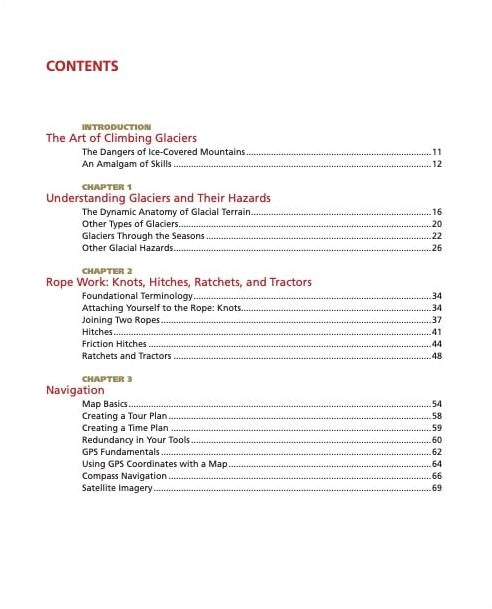
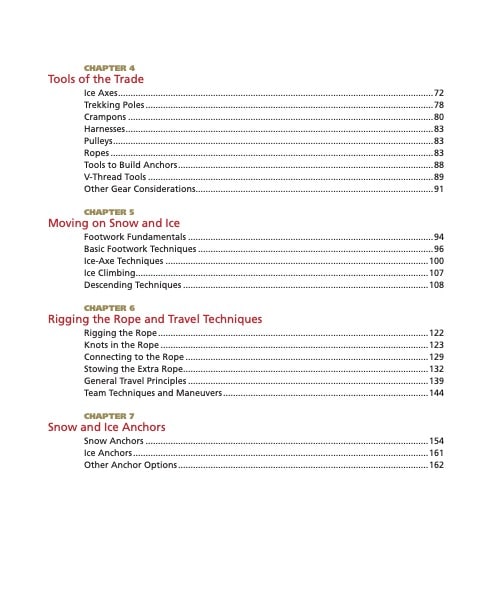
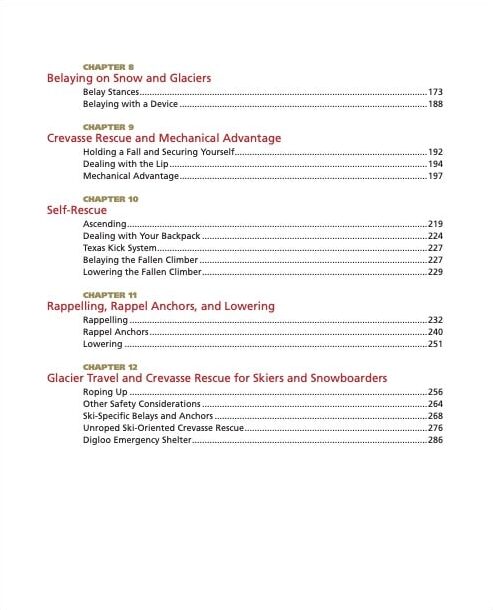

On that note, what cannot be overemphasized is that if you are new to the mountain travel scene, Nicholson’s Glacier Climbing & Crevasse Rescue will become well-creased in no time. As noted above, it’s been years since I’ve updated any of my mountaineering fundamentals manuals. And I’m psyched that I have access to this new reference book.
Let’s take a moment and marinate in the intermittent guest essays peppered throughout the book. As an interlude, they provide personal and insightful vignettes that both entertain and emphasize the importance of being prepared, as well as being savvy enough to be reliable and versatile in the field. Chamonix-based guide and alpinist Rob Smith contributes a sharp piece titled “Shelter is Survival,” where he asserts that a section of silnylon can save lives when the weather turns sour in the alpine. Alan Rousseau, another guide and noted alpinist, describes an ascent and descent with a client in the West Fork of the Ruth Gorge titled, “An Equal Measure of Luck and Skill.” This short and harrowing piece emphasizes the importance of having a wide breadth of skills that one has mastered, with, as the title notes, some luck, to make it down safely. And if the simple prospect of glacier travel in your future doesn’t motivate you to learn the rescue craft, Nicholson’s short essay “Crevasse Rescue Practice Makes Perfect” should be the kick you need. He relates the story of a rescue he performed near the conclusion of the Haute Route in Switzerland. A father, whose son had fallen into a crevasse, flagged down Nicholson and his guided group. This tale ends positively, but it serves as another poignant reminder that the best we can do is take resources like Glacier Climbing & Crevasse Rescue to heart and make them part of our seasonal and yearly rituals, becoming better partners and increasing the odds that we can return home from our adventures.
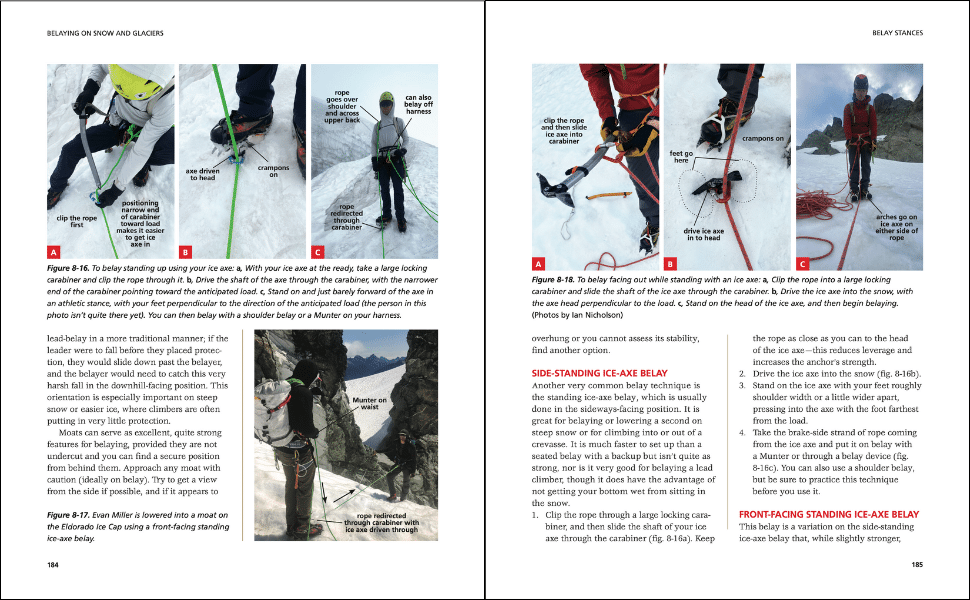

Nicholson is not new to the technical mountain travel reference book scene. He’s penned Climbing Self-Rescue Essential Skills: Technical Tips & Improvised Solutions, and is no stranger to explaining complex systems. We’ll have to let a beginner mountain traveler make the assessment, yet I believe Nicholson’s approach in Glacier Climbing & Crevasse Rescue is accessible to newcomers. Each instructional unit features numerous detailed photos accompanied by clearly written explanations and captions. In some instances, however, Nicholson uses illustrations to highlight some techniques and strategies.
The bottom line is that such a thorough book can also be overwhelming. It is information dense. That information is both broad and, when necessary, appropriately granular. I know there are several skills I’m going to emphasize mastering this season, which means I’m going to start small as I continue to learn from Nicholson’s book. There’s a lot to learn. And I shouldn’t exclude the subtitle, Essential Skills for Snow Travel. For those seeking information on best practices for ascending and descending steeper snow slopes, and methods for establishing anchors in snow and proper belay techniques, the book has you covered. It is much more than simply a treatise on glacier travel and rescue. Further, for those keen on hanging it all out there before learning core travel and safety tenets, the book, we hope, will serve as a reminder of where you should perhaps draw the line when it comes to risk-taking. In other words, this book will certainly reveal what you don’t know and provide the means for you to know it (or at least better understand it), and then practice in the field.
Do I see this book becoming a “bible” of sorts for mountain travelers? I do. I sense that it will become a well-received reference, even for those more keen on video tutorials. It’s likely time you start diving into your own copy of Nicholson’s book. You’ll have a world of key information at your fingertips.

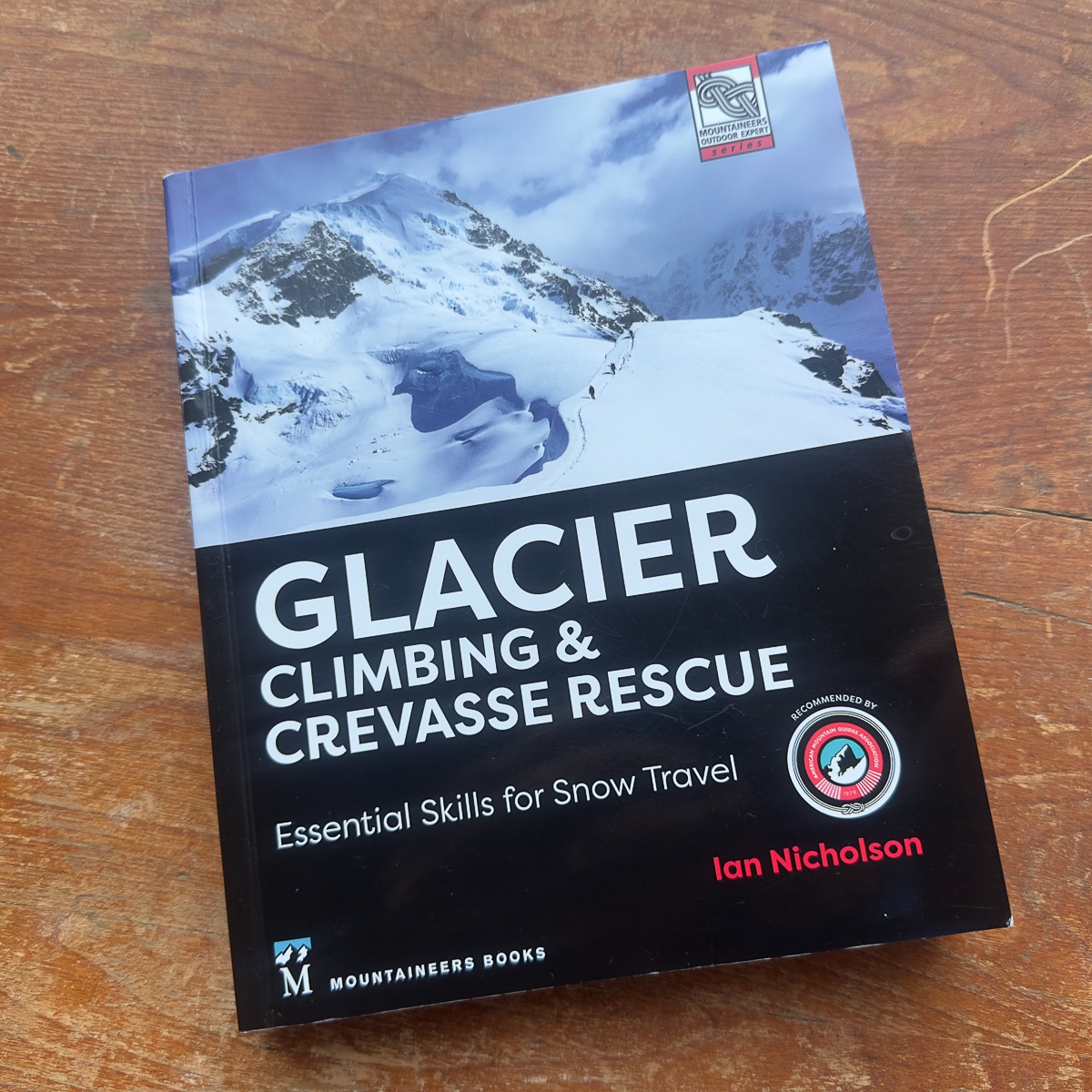
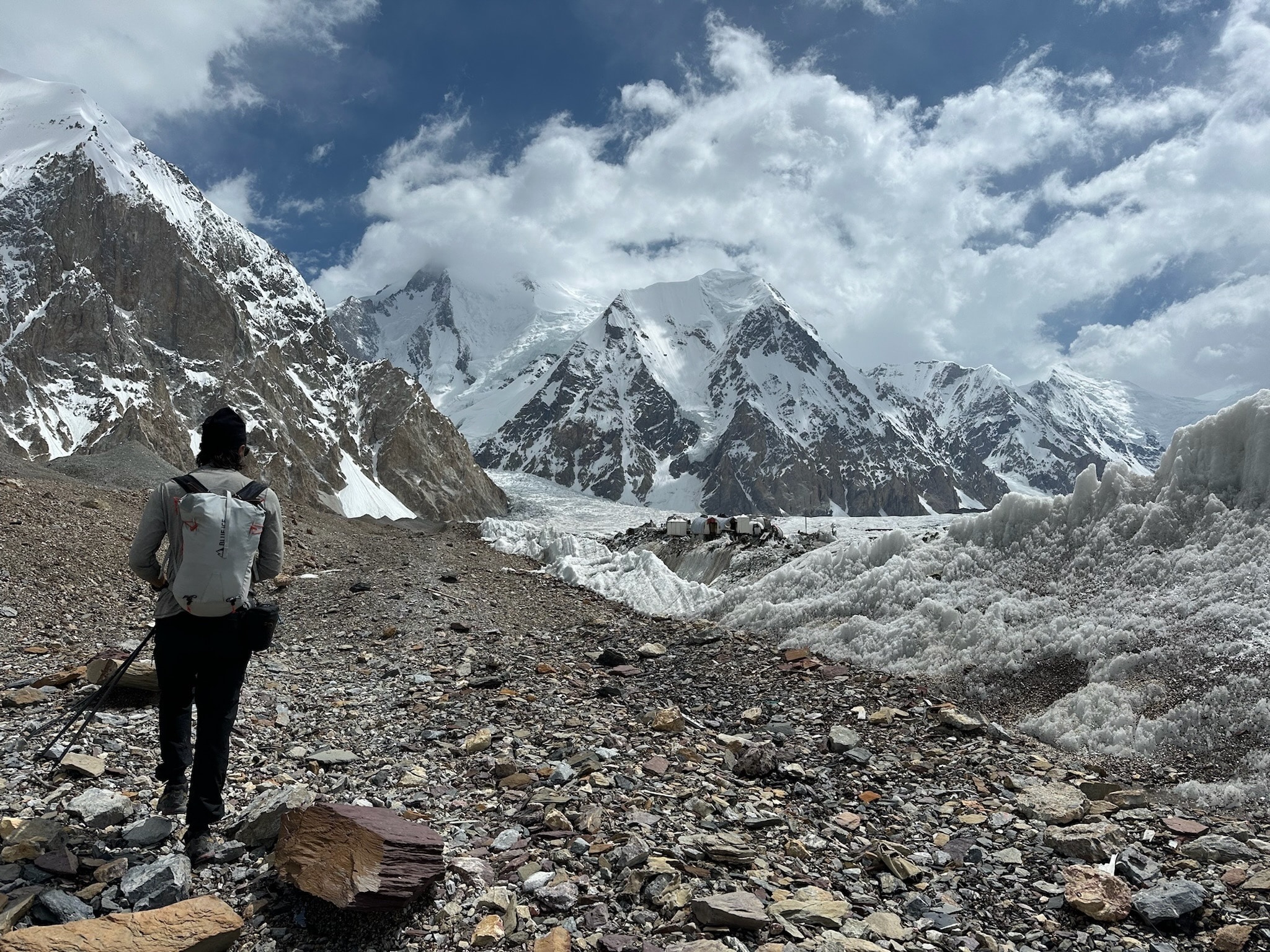
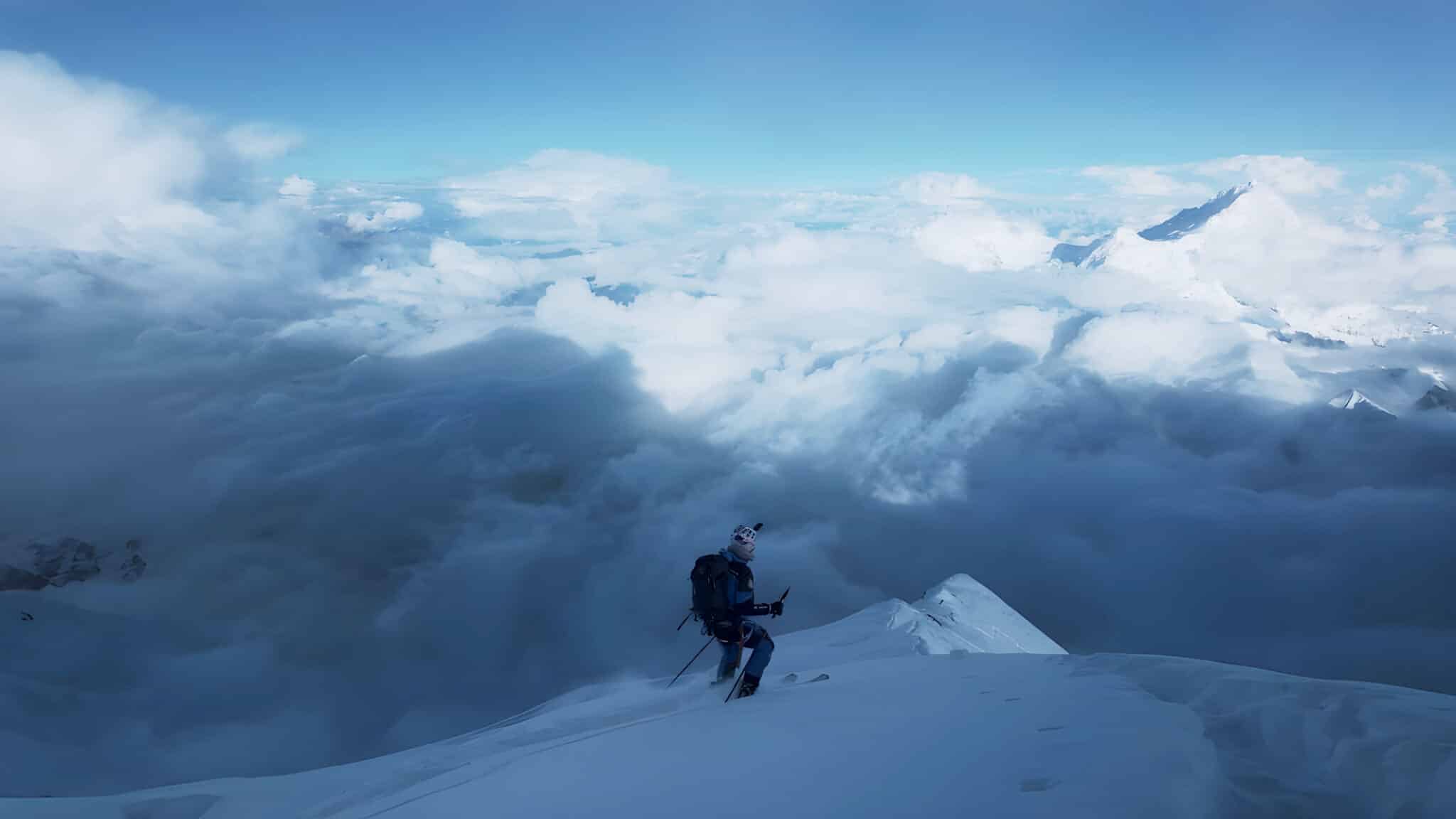
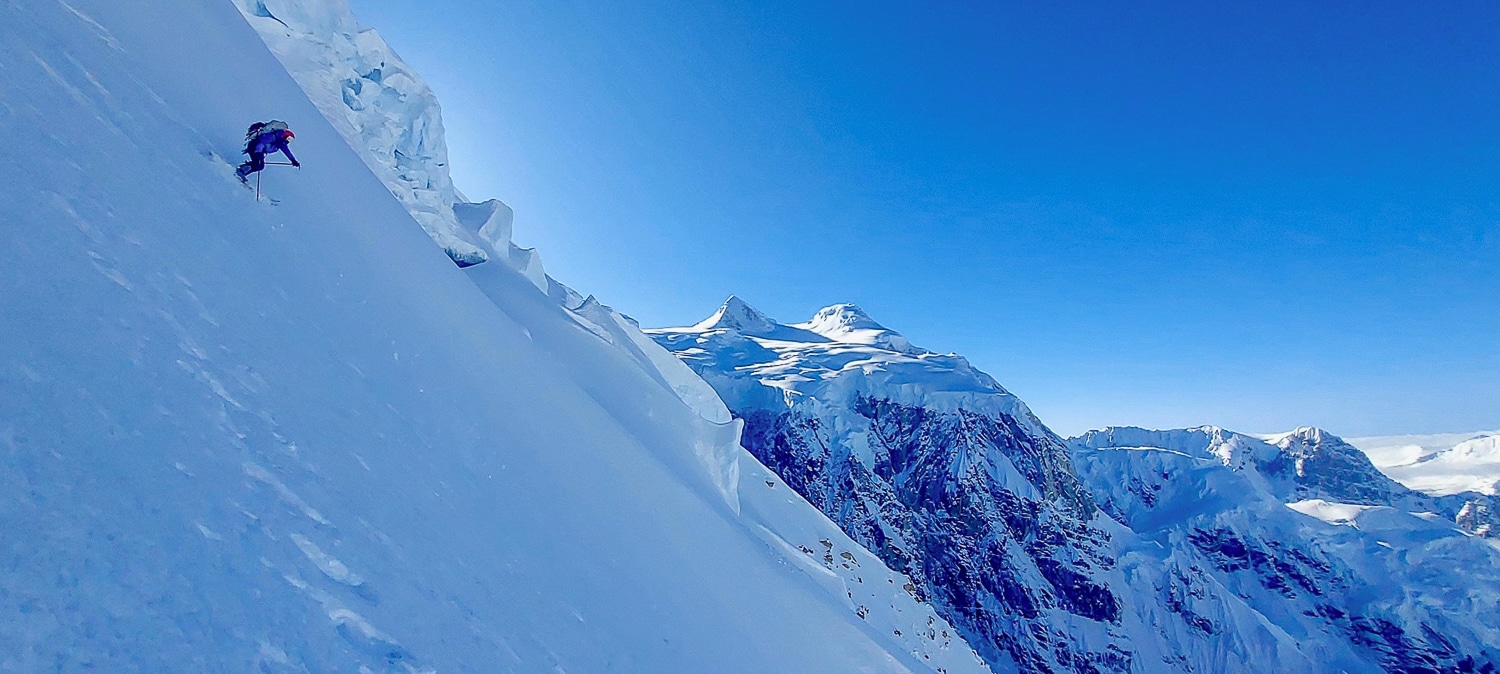
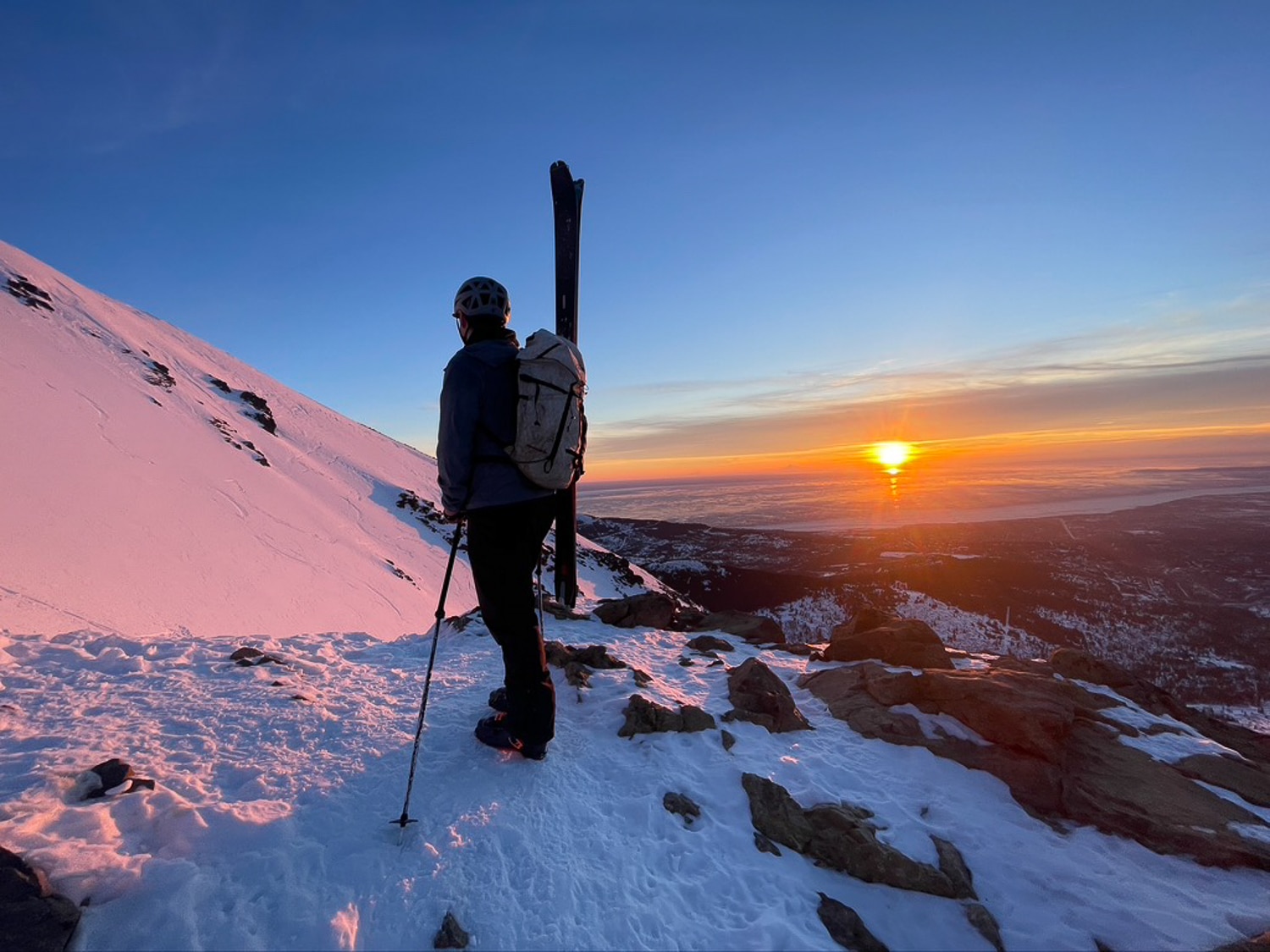
Leave a Reply
You must be logged in to post a comment.